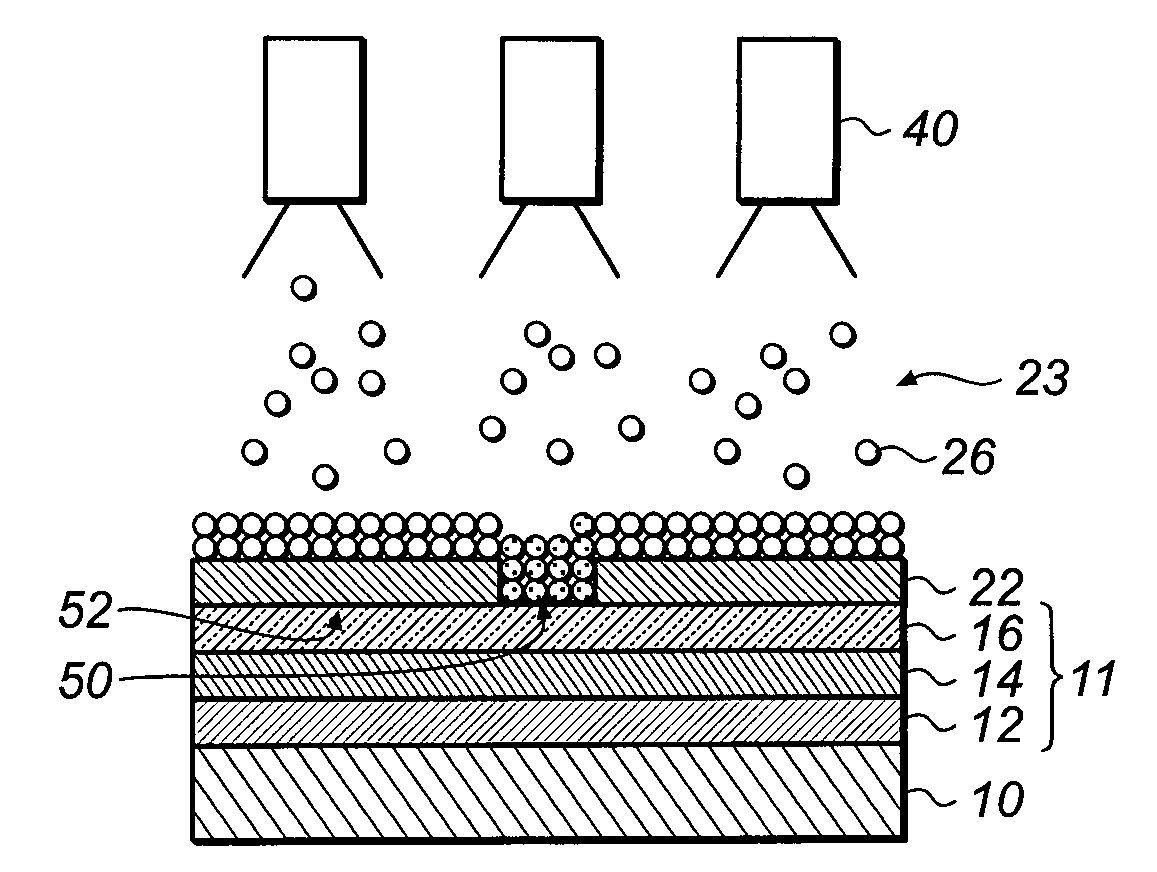Device and method for improved power distribution for a transparent electrode
a technology of led materials and transparent electrodes, which is applied in the manufacture of electrode systems, electric discharge tubes/lamps, and discharge tubes luminescnet screens, etc., can solve the problems of limited current-carrying capacity of such electrodes, limited power supply to led materials, and limited light emitted, so as to improve the power distribution of top-emitters
- Summary
- Abstract
- Description
- Claims
- Application Information
AI Technical Summary
Benefits of technology
Problems solved by technology
Method used
Image
Examples
Embodiment Construction
[0036]Referring to FIG. 1, a method for improving power distribution of a transparent electrode in a light-emitting diode (LED) device, comprises the steps of forming an LED over a substrate, the LED including a first electrode, a transparent electrode, and one or more light-emissive layers formed there-between. The LED is made by forming 100 a first electrode over a substrate, forming 105 one or more light-emissive layers over the first electrode, and then forming 110 a transparent electrode over the light-emissive layers to make a light-emitting diode (LED). A patterned protective layer is formed on the transparent electrode, the patterned protective layer having open areas wherein the protective layer is not present and covered areas wherein the protective layer is present. For example, an unpatterned protective layer may be first formed 115 by a chemical vapor deposition process over the transparent electrode and then patterned 120 using laser ablation. A solution, for example, ...
PUM
| Property | Measurement | Unit |
|---|---|---|
| diameters | aaaaa | aaaaa |
| humidity | aaaaa | aaaaa |
| diameter | aaaaa | aaaaa |
Abstract
Description
Claims
Application Information
 Login to View More
Login to View More - R&D
- Intellectual Property
- Life Sciences
- Materials
- Tech Scout
- Unparalleled Data Quality
- Higher Quality Content
- 60% Fewer Hallucinations
Browse by: Latest US Patents, China's latest patents, Technical Efficacy Thesaurus, Application Domain, Technology Topic, Popular Technical Reports.
© 2025 PatSnap. All rights reserved.Legal|Privacy policy|Modern Slavery Act Transparency Statement|Sitemap|About US| Contact US: help@patsnap.com



